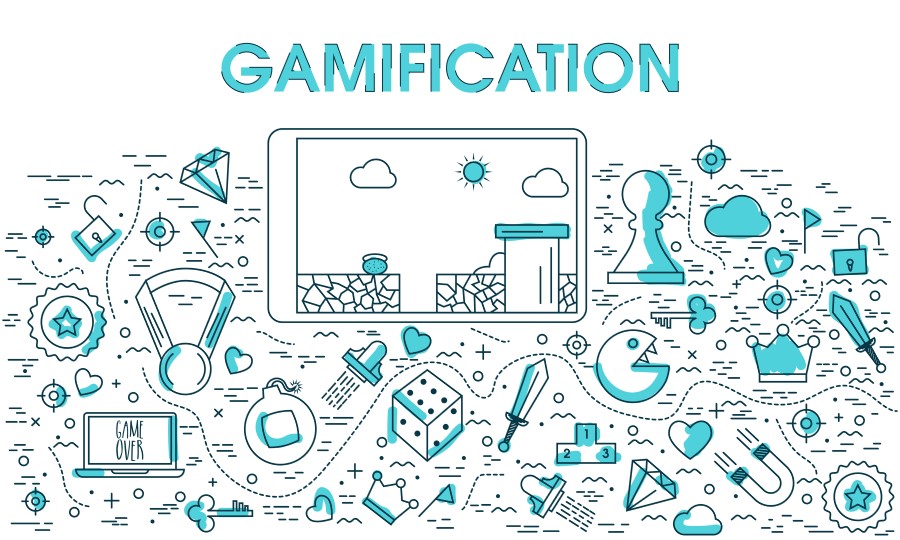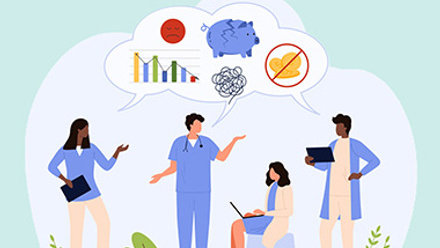How to use gamification to develop happy, healthy employees

Gamification is already being embraced in some areas of the workplace. Take for example the evolution of wellbeing in the workplace apps coming together with HR management systems. Many employers are evolving to include gamification by allowing workers to log into their personal dashboards, view their statistics and earn rewards for completing tasks or supporting co-workers – whilst at the same time promoting healthy recipes, workouts or relaxation techniques. That being said, employers now have the opportunity to utilise gamification principles to a greater extent to improve their employees’ physical and mental wellbeing.
A step in the right direction
Employers can take proactive steps (literally!) to improve employees’ health through gamification. We all know at least one person with a fitness tracker attached to their wrist or an app on their phone. People are now more conscious than ever about proactively bettering their physical and mental health, so why not play on this to improve your employees’ health while they’re at work?
Perhaps employers could encourage people to purchase fitness trackers with discounts or vouchers and then introduce fitness targets or goals for employees. Employees could be motivated to reach these targets with wellbeing and fitness related prizes such as exercise classes or fitness gear. To ensure that all levels of fitness and activity are accounted for, a range of different targets or even personalised targets could be introduced.
Competition and fun is a key part of gamifying the workplace. Employers could incentivise employees to compete with one another with weekly or monthly competitions on who has taken the most steps or who walked or ran the most miles. And, as running or walking isn’t everyone’s favourite, how about including other activities like swimming, Pilates or yoga. We have also seen employers introduce ‘lb’ for ‘£’ weekly weigh-ins, ie the person with the least or no weight loss donates to a charity. All of this will certainly captivate the competitive amongst us and may inspire others.
Prevention is better than cure
Over the course of the last three years many employers have taken a preventative approach to employee health and wellbeing, with the implementation of innovative apps that give employees access to GP appointments via video call 24 hours a day.
Having the option of talking to a doctor whist still at work, at any time of the day, may well appeal to today’s busy workforce who are used to being able to access almost everything with just a touch of a button on their smartphone. The implementation of this sort of technology will help to prevent employees having to take unnecessary annual leave or sick days to attend appointments and provides them with a fast and convenient solution, which will leave both you and your employees happier. Now the gamification element needs to be thought about further to achieve a more engaging workplace wellbeing offering.
Get your head in the game
It is easy to see how the physical health of employees can be improved by using fitness gadgets, facetiming with doctors and competing with colleagues, but how can an employee’s emotional wellbeing, or mental health, be kept in check? With one in six British workers suffering from conditions such as anxiety or depression each year, and with the Mental health at work: The business costs ten years on (2017) report suggesting that mental health costs employers £34.9 billion annually, it is clear that this is a key area for employers to tackle.
Despite the stigma around mental health issues changing for the better, opening up to a colleague about anxiety or depression is daunting for many. More and more organisations are now introducing initiatives such as ‘mental health first aiders’. Perhaps a key way that gamification could help here is by creating a link between technology, an app or an online portal for example, and mental health first aiders who have been trained to recognise colleagues that are struggling, suffering from some kind of emotional distress or simply just need someone to talk to.
Gamification to reduce stress
There are already a number of dedicated mental health apps, some of which are marketed as an alternative to therapy. Some apps, for example, are designed to help users cope with depression, anxiety, stress and many more conditions and contain a positive and negative habit tracker to help users keep up good habits and break the bad ones. Another similar app gamifies your daily tasks to help reduce stress and anxiety, by turning each of your tasks into a ‘little monster’. The more little monsters you defeat, the further you progress in the game!
Promote these sorts of apps in the workplace through a holistic approach, ie strategy first, then select the collection of apps that best support your workforce – the employer is the first step in bringing together gamification and wellbeing in the workplace.
Across every industry we look at, we are seeing companies rethinking their digital strategy to include gamification to keep people hooked. Employers who have yet to embrace the new technology or learn to speak in the language of today’s generations would do well to dedicate time now to addressing both employees’ physical and emotional wellbeing in the workplace. Healthy and happy employees equals more engaged employees and will ultimately lead to a more productive workforce – let the gamification commence!
The author is Dipa Mistry Kandola, head of flexible benefits service at LCP.
This article was provided by LCP.







